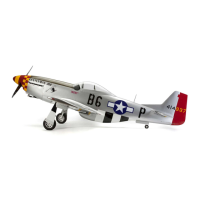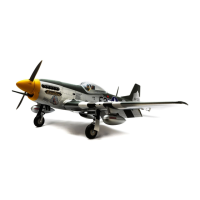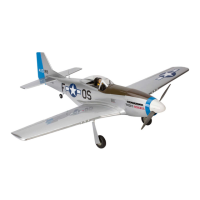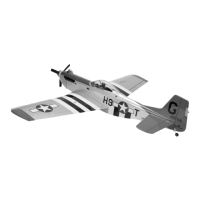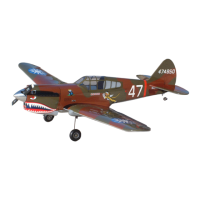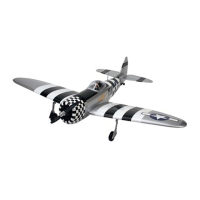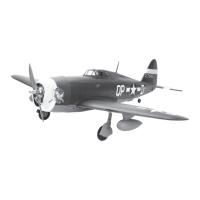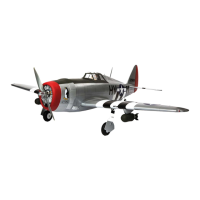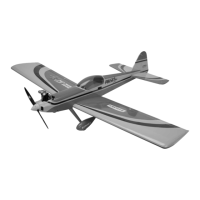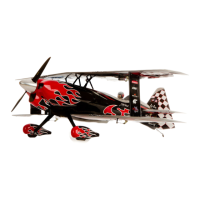Do you have a question about the Hangar 9 P-51D mustang and is the answer not in the manual?
Outlines essential rules for safe operation and handling of the model aircraft, including distance and location requirements.
Provides critical warnings and cautions regarding the safe charging of batteries to prevent hazards.
Step-by-step guide for connecting and charging batteries, including LED indicators.
Explains error conditions identified by LEDs and provides solutions for common charging issues.
Explains the purpose of binding and the need to match the transmitter to the receiver for operation.
Outlines the steps and important considerations for successfully binding the transmitter to the receiver.
Explains how the failsafe system activates when transmitter communication is lost.
Instructions for installing the bind plug into the receiver for the binding process.
Emphasizes performing a radio system range check before flying for safety and proper operation.
Details which switches on various transmitter models control flight modes and panic recovery.
Guides users on configuring transmitters for SAFE system operation, including mode selection.
Limits pitch and roll angles, and provides self-leveling for stable flight.
Offers natural flight experience with smooth handling and precision, including throttle-based climb/descent.
Provides natural flight experience with unlimited pitch/roll angles for advanced pilots.
Returns aircraft to stable, upright flight when control is lost; requires safe altitude.
Explains how to use Panic Recovery and the importance of sufficient altitude if the aircraft is inverted.
Details how to perform the test to ensure correct control surface response and SAFE system activation.
Guides on conducting the SAFE control direction test, including pre-test checks and correct procedure for ensuring proper aircraft response.
Instructions for attaching the rudder clevis, centering the rudder, and securing the clevis with tubing.
Guides on attaching the elevator clevis, centering the elevator, and securing it with tubing.
Provides troubleshooting steps for when the engine fails to start, including checking spark plugs and fuel lines.
Lists common engine troubleshooting checks such as spark plugs, fuel lines, mechanical function, and muffler lines.
Explains engine flooding, provides steps to remedy the situation by removing excess fuel.
Describes engine seizing and the importance of professional repair by authorized centers.
Explains the importance of CG and provides steps for attaching wings, identifying CG location, and balancing the model.
Outlines essential checks for batteries, radio installation, hardware security, and range checks before flying.
Details pre-flight checks for the motor, transmitter cycling, trim positions, and servo harness security.
Lists daily checks for transmitter battery voltage, polarity, and security of all hardware components.
Covers daily checks for control surface movement, range checks, transmitter cycling, trim positions, and servo harness security.
